-
Posts
1,084 -
Joined
-
Last visited
Content Type
Forums
Detector Prospector Home
Detector Database
Downloads
Posts posted by Jonathan Porter
-
-
4 hours ago, Steve Herschbach said:
You are not ruffling my feathers at all JP, and I hope I don’t ruffle yours when I say that yes, you are defending Minelab. You put yourself out there as their default spokesperson, when they never speak for themselves. If anything is ever said that is critical of Minelab, you are there running defense.
I’ll own some of that Steve without ruffling my feathers, OK my feathers are ruffled a little but only because I think you are being a bit harsh.🥺 I have an insight into ML than many do not as such I often see misinformation posted around the net including on this forum and feel compelled to at least try to put balance to an unbalanced discussion, because as you have stated ML do not have a public voice (their choice). I’m sorry if this makes you feel I’m placing myself in the role as the ‘unofficial spokesperson’ as I can assure you my days of stepping up and blindly defending them are long gone, you and I are way too long in the tooth to be starry eyed and romantic about this kind of thing anymore. That does not say I’ve given up just that there’s a tempering and hopefully a wisdom to my ways now.😕
4 hours ago, Steve Herschbach said:Enough. I’ve said all I have to say about all this. Interesting discussion though, and thanks for the alternate perspectives JP. Now go out and find some gold!

Calling me a Minelab lickspittle and then doing a mic drop and shutting down an interesting conversation is pulling feathers out by the handful bud but I see your point and at the end of the day the world will continue to move round the sun regardless of any incorrect remarks or injustices we might perceive. I think in this case we are both right, I am a Minelab lickspittle and you my friend are a crotchety old grumble guts who leaps to the little guys defence at the drop of a hat and I love you like a brother for every bit of it. ❤️😆
Your good friend JP
-
3 hours ago, Steve Herschbach said:
The 17” mono is a dream coil that will probably be my most used coil next year. I still honestly believe that in the U.S., on most ground, and most gold we encounter, the GPX 6000 is the optimum detector choice at this time. That being the case the GPZ situation is moot to me personally, but I truly feel the pain of those who have waited, and continue to wait, for a plug and play coil selection befitting the worlds most expensive consumer level metal detector ever produced.
Definitely not trying to defend ML here or ruffle your feathers Steve, I agree in a large part with you fully. My point however is that at least now there’s a start to accessory coil options for the GPZ which although only a bit smaller is a lot lighter. Those faithful loyal GPZ customers who have been patiently waiting unfortunately only represent a small part of the overall GPZ market (of course I empathise with them I’m one of them😞), whereas the GPX6000 will demographically sell a lot differently hence the announcement of more coil options so soon after the release.
The main market where the bulk of GPZ’s are sold are not interested in the Zsearch 12, they have a totally different approach to their search for gold, its all about big deep nuggets which for them is mostly in virgin ground and the GPZ 7000 with its 14 inch coil still largely fits that bill. Also for those interested, a Zsearch 12 inch with lower shaft costs $1295 here in Australia whereas a GPX6000 costs approx 6 times more at $7999 (with 2 coils), I’m not sure of the comparative prices in US dollars.
Prior to the release of the 6000 the GPZ 7000 was the only real choice for depth and small target sensitivity compared to a GPX 5000, the ZVT tech will always be a heavy unit due to the requirement of 3 windings in the coil so I seriously doubt we will ever see a sub 1 kilogram coil or small coils on any future ZVT models if ML develop anything going forward, it’s just not possible and TBH not required now we have the amazing GPX6000. 😊 ZVT is all about max depth.
Just my opinion from my own perspective.
JP
-
You have very valid reasons for being frustrated Steve so no argument from me. The X coil thing is a ‘no checks and measures’ freedom all aftermarket coil makers used to enjoy but alas NF have to pay the price for ‘plug and play’ freedom by being required to jump through a lot of hoops which is very time consuming, I presume Coiltek will also be jumping through those very same hoops and would likely explain the mid 2022 advised release dates.
Trying to develop a smaller coil for the GPZ when the rumours of a better GPX being in the works would have been a nightmare to try and crystal ball. As it is our Zsearch sales have dropped right off since the release of the 6000 so those fears have been to a pretty large extent realised (you do however need to take into consideration our season is about to end with summer coming on).
I would like to see a smaller Zsearch and also a larger one but if I have three Zsearch coils that’s a lot of coin invested, for a lot of people that would be prohibitive and I would say NF are very aware of that. Do they invest R&D time into a smaller coil when the GPX6000 is doing such a good job on the smaller gold or do they invest in a larger coil that might have a smaller sales volume instead? I’d say ML did not deliver on more coils for the GPZ for the very same reasons with the added development disincentive of the GPZ 7000 still continuing to sell well in its current guise.
JP
-
45 minutes ago, Chase Goldman said:
JP - I think Steve was coming at it from the perspective of value and cost based on what you have already invested in the machine. He explicitly stated that. If you already have a coil of a certain dimension, it is not necessarily a great value to invest in a coil that has only incremental differences in weight, dimensions, or performance than the coil you already have. If you are starting from scratch with no money invested in any coil and were able to choose one or the other, than that is a whole different situation. You are looking at the NF coil from a standalone basis or from a comparison basis as if the subject did not already own the reference coil. I think that was point Steve was trying to make, not that the NF is underwhelming in its own right but compared to what is already owned. Anyway, that's how I interpreted Steve's response. I might be off base.
Yes I read most of it that way too, I do see his VERY valid points. And I also understand his position and his decision to opt out of the 7000 after waiting so long for ML to deliver the promised 11” coil. I get that a one inch reduction was not enough of an advantage for him to consider the coil for his purposes especially when you consider the entry price. Like I said I do not wish to offend just provide a counter argument to some of what has been written based from a different perspective without devaluing his opinions etc.
As an example the shape of a DOD coil on the outside is pretty much pointless as the interaction between the Tx and Rx windings determines the shape and how far out of shape you can go with the design. DOD coils are not conducive to being pushed too far out of shape so in the end you end up with a semi elliptic design or an obvious elliptical shell that does not have a winding inside that’s reflects the housing (as is the case with the elliptical X coils). This point alone will always dictate the final shape of a DOD coil, or if you decide to do a housing that is overly elliptical you will have a large amount of forward section of coil with near zero target sensitivity due to the receive points being pushed further back from the front. A catch 22 from a developers POV.
-
5 hours ago, Steve Herschbach said:
The NF coil is a whole 1” narrower Rob - consider me entirely underwhelmed, and why I basically ignore it. It’s too close to the stock coil as far as I’m concerned, to be worth the money. I like coils to be widely different in size and shape. The NF coil was a huge disappointment to me after waiting so long for a small coil, small being 11” round or smaller in my book. The draft Minelab manual for the GPZ 7000, page 39, showed an 11” coil as a future option. That set my expectation, and I'm still grumpy it never happened.
A 300 gram weight reduction is no small thing on a GPZ, that fact alone is why they’ve sold so well in Australia, then we also need to consider the very obvious improvement in sensitivity and then there’s the EMI and Saturation signal reduction. I suppose if you think of the Zsearch as ’’It’s only an inch smaller” the GPX11 mono on the 6000 is underwhelming also as it’s only 1 inch smaller than the 12” Zsearch. 🤔 😬 Continuing to be a bit cheeky here it was not that long ago it seemed the GPX17 elliptical was being talked up as the ultimate US combination, now that’s a horse of a coil compared to the 12” Zsearch. 😮 I do not mean to offend or get personal and I truly do understand where the frustration is coming from, so I hope my tongue in cheek but still serious counter argument is seen as me just offering a different perspective on the subject. 😬🥺
The GPX6000 should be a lot easier to make a variety of coils for, retail cost alone is way less than a GPZ so it should not break the bank to own a few different sizes, this will also mean the developers can take the risk of investing in a range of shapes and sizes that do not have to top the charts sales wise to recover their investment. Hopefully this will mean that ‘all of us’ will finally get our wish lists fulfilled.
I’ve had many discussions with Nugget Finder over the past 2 years about what coil sizes to build and what would sell well, clearly there is demand for a smaller more manoeuvrable coil but at the same time there is a lot of pressure for a larger coil (probably even greater than the demand for a smaller one) but overwhelmingly there is/was a huge demand for a lot lighter coil to be developed that would make the GPZ much more user friendly to a lot more people, to that end I think NF nailed it. Now that the GPX6000 has been released I think retrospectively NF made a good call on the 12” size range, that size still has merit for a GPZ user who also owns or is contemplating owing a GPX6000.
JP
-
5 minutes ago, Calmark said:
I'm located in California, USA and would also like to see an elliptical coil with a width in the 5-6 inch range. That size would make scanning bedrock crevices and rocky areas much easier to accomplish.
I don't want a more sensitive coil than the 11in factory round, as it already finds tiny nuggets. I think a traditionally wound small coil could tame it some against really nasty ground, yet the small size help it still find gold the size the partially flat wound 11in round Minelab already cleans up on.
The issue is when making a smaller coil they will inherently be more sensitive due to the smaller size (more winds of wire to get the inductance right), everything gets more cramped inside a smaller coils housing so things like the solder joints can become incredibly problematic along with the proximity of the coil lead itself (I’ve discussed the GPX6000’s ability to ‘see’ its own coil lead on another thread).
An elliptical shape can very quickly leave the developer will nil room to put anything. I’m not saying it can’t be done just that there is a high chance that such a small coil could be problematic with GeoSense. The good thing about this forum is one of the developers is actively participating on the forum and will see the comments here and take them on board, the more people who ask the more incentive there will be to invest time and energy into overcoming any pitfalls. Demand will always drive incentive to invest. I highly recommend my American prospecting mates to put their name to this thread and push hard for this to happen, this is your chance to finally get the coil you desire. 😊
JP
-
20 hours ago, Skookum said:
Interesting feedback. Even with a smaller coil wouldn’t a PI have less reactivity to hot rocks than a hot VLF?
P.S. Not a challenge to what you have seen. Just trying to understand theories. The only thing I can compare to here is the SDC.
Yes a PI will have less ground reaction, in the case of the 6000 it’s pushing the PI tech to crazy extremes (even crazier than Steves insane sensitivity settings 😝), because of this ‘pushing of the envelope’ there can be undesirable behaviours in certain conditions like a tendency to be more prone to EMI, Salt and Saturation signals.
My point was if the standard 11” coil is achieving such ridiculous amounts of sensitivity in a ‘pushed to the very limits’ detector then there might be an issue in pushing that even further by making a smaller/more sensitive coil. All conjecture on my part and not intended to burst anyone’s balloon. Logically a super sensitive PI is still going to be a better option than a VLF assuming the gold present is conducive to PI.
JP
-
3 hours ago, Steve Herschbach said:
Nobody in the U.S. cares about that JP. You can’t find gold where coils won’t fit, and even the 11” mono is too large for many locations here. And, we have lots of mild ground with no hot rocks. So make it smaller, and make it HOT. If it won’t work in some places, oh well. It’s all about where it will work, not where it won’t work. We desperately need a small GPZ coil here, and since that seems impossible unless you go X Coil, then give us one for the 6000.
The 10” x 6” form factor has always been the most popular nugget coil size here, and yet it’s always the last coil we can seem to get out of Minelab. Trevor is surprised by demand for the 10” x 6” Equinox coil? I have been pounding the table, and pulling my hair out, since day one trying to make it understood that is the coil everyone wants here. If we could just get people to listen to us…. from April 2018
And yes, people here still want a plug and play small coil, like the 11” round or smaller, for the GPZ. It’s all GPZ owners here talk about, like wishing we could win the lottery. One factor in my selling my GPZ was my feeling that Minelab reneged on the promised smaller coil, and that still bugs me to this day.
All good points Steve and sorry for not seeing “How it is” in your neck of the woods.🥺 My concern is based around the ultra sensitivity of the 6000 and if that then might impact on the ability to actually make a coil that small, hence the cautionary remarks.😬 I understand the “need” and especially your frustration for not having what is a glaring requirement for a coil size that will complement the areas you work.
As an example of supply and demand though I can actually have a pretty good guess at the numbers of the new NF Zsearch coils that have gone out and as it currently stands I’d say my business here in Clermont has shifted an equal amount of Zsearch 12 coils as the whole of the US orders. Now to be fair the US winter gold season is only just starting up and the Zsearch was hard to get hold of at the end of the US season earlier this year along with the subsequent release of the GPX 6000 (plus the Zsearch is also an expensive add on), but this example probably goes a long way to explain why the need in the US has never been fully addressed which is a shame. 😔
In the case of the 6000 I think a smaller coil will be a very good seller in the USA so hopefully Coiltek will do their best to develop a coil that is more suitable for your conditions, knowing Coiltek they WILL as they have a very good following and an expansive dealer network over there. Hopefully by this time next year there will be lots of examples of happy 6000 owners showing off their finds on the forum. 😊
JP
-
Something to consider with the 6000 with coil sizes etc, as it currently stands the GPX6000 can easily find tiny pieces that require you to wet your finger to pick up (this is all with the supplied 11” mono), having a lot smaller coil could bring a lot of pain in the form of increased surface ground signals due to the increased sensitivity especially in the hot variable ground but also in areas where there are lots of tiny hot rocks etc.
I think a 12 x 8 inch elliptical would be a really nice fit for the 6000, the weight would balance out the detector nicely (similar to the GPX11) whilst at the same time offer a reasonable amount of extra sensitivity without increasing too much ground signal and of course with the added advantage of being an easier coil to use in difficult terrain. An elliptical shape would also help somewhat with EMI.
Just my 2 cents based on what I know of the 6000 learned during field trials etc.
JP
-
MY OCD has a harder time with the out-of-true issue than the actual problem. One method I’ve used is attach the GPZ Guide arm to the mid shaft at the lowest end which seems to totally stop the mid shaft from twisting, the amount of twisting I get on the lower shaft is now minimal and easily corrected by fixing the coil with the foot and performing a light twist back to centre.
As Steve has said the amount of annoyance hasn’t been enough of an incentive for me to actually bother to do something about it.
Another suggestion is to not take the shaft all the way out to the red line, leave at least the width of the lock knuckle forward of the red line to give a good grip without it actually trying to grip on the red line (red line section has been machined smooth to get the paint to adhere) and prevent too much leverage on the end of the shaft, secondly I recommend users pull the shafts apart periodically and using a damp microfibre cloth to clean inside the locking mechanism and the shafts themselves. Do not use any chemicals, just plain water is sufficient.
JP
-
The speaker is the pits, it generates its own EMI or the speaker being in close proximity to the very sensitive electronics housed in the plastic housing does anyway. Also if you have a touchy coil lead especially on the 11” monos wobbling the control box too much will cause EMI like noises, to ascertain this just hold the detector dead still and listen, no noise when held stationary most likely equals coil lead wobble noise.
Lastly if you do more than say 6 to 10 Noise Cancels in a session then I highly recommend performing a full factory reset of the detector by turning off then turning on again but this time continue holding the ON button in for 7 seconds. In fact it’s a good idea to periodically perform a full reset regardless to give Geo-Sense a fresh start. Turning off then on again will retain a lot of dross accumulated over many sessions, a full factory reset will clear the logs and get things purring again.
Hope this helps
JP
-
3 hours ago, Chet said:
The detecting environment has some effect on the choice of coil cable routing and placement.
It was like sliced bread was reinvented when the GPZ 7000 came out with the taut tight-fitting stretched cable inside the detector shaft. Gone were the days of messing with rewrapping loose floppy cables with Velcro with each coil change.
Experience with the GPX 6000 in bushy areas has re-induced an external cable problem. Leaving a loose loop above the coil causes frequent false target sounds when swinging into or pushing under bushes.
Normally setting and raising the detector is a small percentage of the time spent in detecting. Sounds generated during those motions can be accepted.
Have a good day,
Chet
All very good points Chet, Chris Gholson used to firmly tape his first coil wrap in as close as possible (just enough loop to allow the coil to flex without the loop being too big) then he would run the coil lead straight along the lower shaft then have lots of coil lead wraps further up. This worked well with the GP and GPX machines but is less than ideal due to the thickness of the cables used on the 6000, plus if makes it a hassle to shorten the stems for transporting etc. This is even more evident in the colder months as the cables stiffen up considerably. As the weather warms up it it’s important to NOT have the lead too tight going up the shaft to prevent stiction as the leads are more prone to noise when they are soft and pliable compared to cold and rigid.
The point to my post was to show how sensitive the 6000 is and enlighten people to the noise they will hear when they fold the coil flat against the shaft. Obviously if the country you work is brushy and the lead snags a lot and not wide open spaces like I have the pleasure of working then modify the way you wrap the lead to suit your detecting locations.
JP
-
There been a fair bit of talk about the sensitivity of the GPX6000 so I just want to show people a potential issue that might confuse things if your unaware and why I commented on another thread about my opinion on issues with inline coil connectors for dongles etc.
Below is a pic of the way I set up my GPX17 coil, you will notice I pin my Velcro pretty high up the lower shaft to create a nice loop in the coil cable to allow for pivoting of the coil. This is specifically done to prevent the cable coming too close to the edge of the coil when I lay the detector down to dig a target.
As you place the coil on the ground the pivot point folds till the shaft is almost flat against the coil, in the case of the GPX17 that is a fair way from the centre of the coil so there is the potential for a lot of the lead to come close to the coil when it’s laid flat potentially causing noise.
To test this for yourself pin the lower lead at about the same distance as the edge of the coil (you can do this on the GPX11 too), then fold the coil flat and push the coil lead loop into the coil edge and listen. The 6000 is so sensitive it can easily see its own coil cable hence why I pin mine further up the shaft to avoid a loud signal as I lay the coil flat.
Lastly the 2nd red circle is to show how I allow some looseness of the cable when I wind it up the shaft to the control box (I also pin the coil lead between the handle and the upper locking nut), this is specifically done to prevent stiction of the lead whilst swinging as the shaft flexes from side to side, if you have things too tight you will create noise from the lead being constantly twisted and flexed by the swing induced deviation/flex in the carbon fibre shafts.
JP
-
6 hours ago, Norvic said:
It was said many ML detectors back last century, what is ML going to come up with next? come on JP a wee hint we won't tell em you told us.😉
Hang in there Vic, its always exciting looking forward into a crystal ball with Minelab. 😊
-
1 minute ago, phrunt said:
Yes, the adapter is a proof of concept adapter for testing, not what the final version would look like obviously.
Simon I think your missing my point, any break or connection in the lead is going to be a quagmire of potential hassles and frustration down the road. The GPZ7000 already has issues with X coil connectors being present if you know what to listen for, the 6000 is a whole new animal again.
-
There are so many reasons for using crypto in the mix, the obvious being security to prevent counterfeit but also it is to protect the requirements for very finely tuned designs to maximise the way electronics actually work especially the GPX6000! A mono coil seems like a very simple thing to build from a “rank and file” POV but in reality there is a huge amount of science going on in the background to get all the different components of the GPX6000 playing nicely together. Also the crypto is used to identify the coil attached which then triggers the unit to configure its settings protocols. Note: I need to check if that is actually the case, I know it is with the GPZ7000 and am assuming its the same with the GPX6000.
I have boxes and boxes of coils dating back to over 4 years ago that represent the creative path that ultimately lead to what you can now buy from ML, if it was as simple as cutting into an exisiting coil and cobbling together different components from exisiting platforms then why would ML have sent me so many different variations over such a long time span?
Having a dabble and a play is fun if the risk is minimal but to suggest the only reason ML use a chip is to be a selfish bully in there own play ground is very naive. BTW I say that as a reality check and not to offend anyone.🙏
Here is an an example of where I actually cringed when I saw the image.
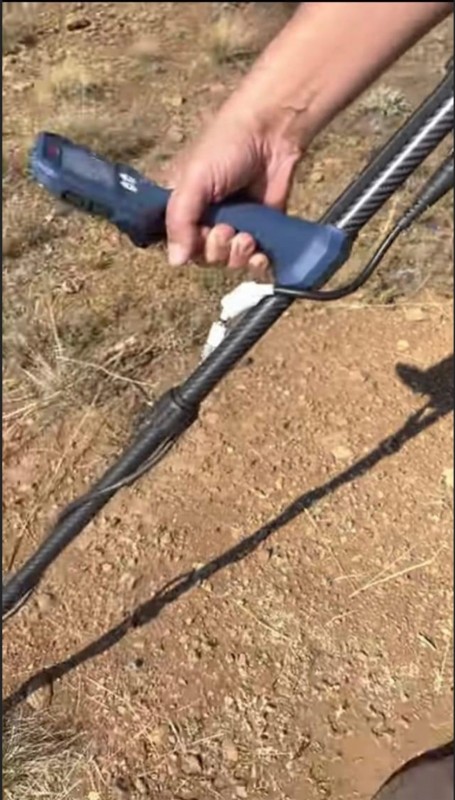
I didn’t cringe because I’m an overprotective ML groupie and good on X coils for ‘having a go’, I cringed because I know the GPX6000 intimately and I KNOW what is going to happen with a modification like that!! NDA’s leave me with only a few options and ways to discuss what I’m seeing here so readers will just have to ‘trust’ me on that score. I say all this not to be reactionary or to creat discord or angst in anyone, I say it from many a bitter experience and massive amounts of frustration over long time frames using less than desirable test units. 😔
Other than that this should be fun as we learn to live with the mighty GPX6000, a detector that is definitely going to go down in the annals of history as one of the all time metal detecting ‘greats’. 😊
JP
-
Good report Vic, the GPX17 sure is a sweet spot coil for the 6000 and once I get another one will spend the bulk of its the time on my unit, a GPZ bungee and wrap, Hipstick and Guide arm really do balance it out well in grassy areas or when you’re wanting to cover a lot of ground, especially if your a broken wing’d oldish fat fart like me. 😂
Another one you ask? 🤔 Yes I let myself get conned/pleaded out of my GPX17 coil by a VERY good customer and then when the replacements came in I got conned/pretty pleased again 😢, and now they are as rare as rocking horse poo here in Australia so it’s back to the 7000 for me and limiting my hours swinging before my arm gets sore.😞 Argh the joys of owning a detector shop and getting on too friendly a terms with your customers. 😤 🤷 😏 🥺 😄
Onwards and upwards, I’ll just have to come on here and read how Vic is doing with his while I wait for more stock. 😢
JP
-
The amount of X coils is so minuscule in the overall bigger picture sales volumes wise that I doubt if it even causes a ripple other than a bit of discussion about the fact of it being done. As Steve has said if ML don’t offer more options then the tinkerers will have a play but at the end of the day the tinkering and the people in the know are small numbers especially those people who are willing to go through all the agony of breaking into a coil etc to then come up with a work around.
Bare in mind a lot of my arguments around previous discussions were around ethics, I still have an opinion about that but that’s ML’s problem now not mine especially when you consider Steve's very realistic reply!
On 9/1/2021 at 5:58 AM, Steve Herschbach said:It would behoove Minelab to stay ahead of the curve this time, and simply produce more coils for the GPX 6000. They can take the money, or they can let X Coil take it.
But more importantly IMHO I felt the bigger issues was the lack of full disclosure by those constantly promoting them especially the risks of blowing a very expensive detector. Other than that have at it, more power to those who are willing to jump through all the hoops, at least in the case of the 6000 the coils are a lot cheaper to buy if you can source one.
So far just about every post that has been made by past pro-vocalists on this thread has a cautionary alluding warning shot clearly aimed at participants from past discussions, I am more than happy to keep out of it if people stop constantly referring to past debates in a way that is suggestive of the actual discussions and outcomes being different to reality.
In conclusion I was informed a week or so back that Trevor from Coiltek recently announced on FB somewhere that they had plans for a range of coils for the GPX6000 slated sometime in 2022, so it looks like ML are well and truly aware of the need for accessory coils this time round.(I did not sight the FB post in question, it was a word of mouth remark made to me by a customer who saw the post so please do not take this as gospel).
JP
-
Wow that is some serious black sand!!😳 I presume you guys have goldfields areas that are similar? I remember some gullies in Arizona having huge amounts of it in the bottoms of the creeks and behind obstacles!!
Getting back to the Salt and Cancel modes I’ve not done a lot of work using Normal timings so my observations were mainly in variable hot ground that required the use of Difficult.
In the case of the 17” I’ve found the biggest disadvantage is in the increase in salt or conductive signals due to the bigger size, there were some places where I could use the GPX11 with a bit of movement signal but when I tried the GPX17 it was virtually unusable. The next issue of course will be the obvious one which will be more EMI , for us this will start to appear next month as our weather starts to change.
Mineralisation with the 17 seemed if anything slightly less from a variability from surface concentrations POV but there was some deeper sounding hot areas that sounded better with the bigger coil as expected. The true eye opener is the outright sensitivity for such a large coil, there is not much of a drop off on tiny target sensitivity when you go to the larger coil except for the usual bigger coil into tighter spaces loss as is to be expected. This point really makes the GPX17 a game changer as you can cover vast tracts of country very quickly and snag the tiniest of pieces that could point you to a potential patch of missed gold. 😎
JP
Recent starter nugget in virgin ground that lead to well over an ounce in a few days.
A few nice chunkster payday nuggets came out when working the area
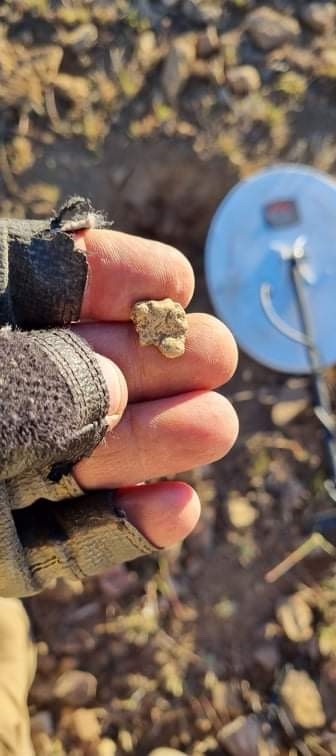
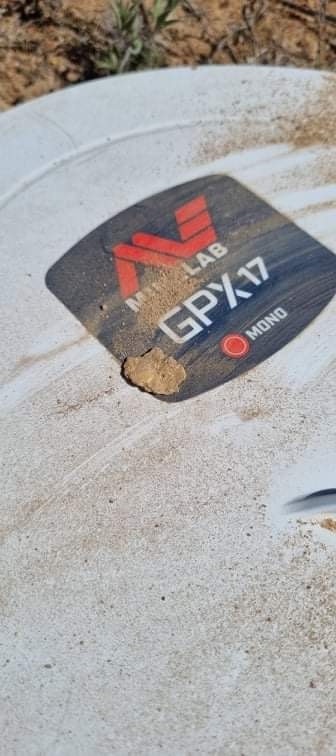
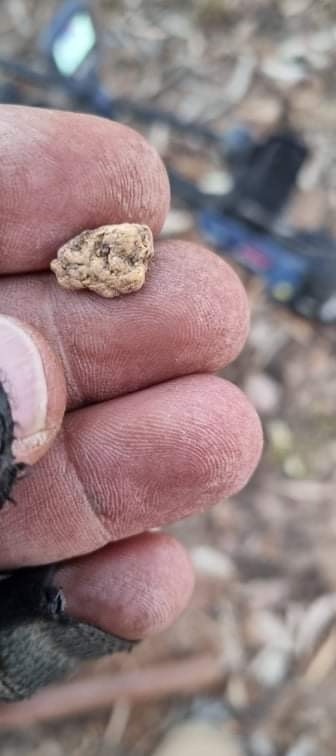
First days haul
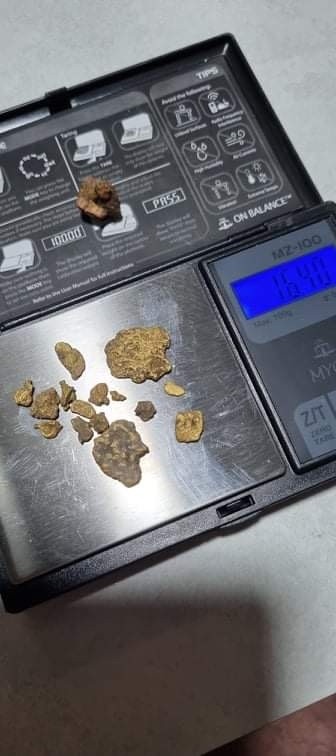
Gold I found working the patch over a number of days, all thanks to that first tiny piece I found wandering around with the GPX17 😊
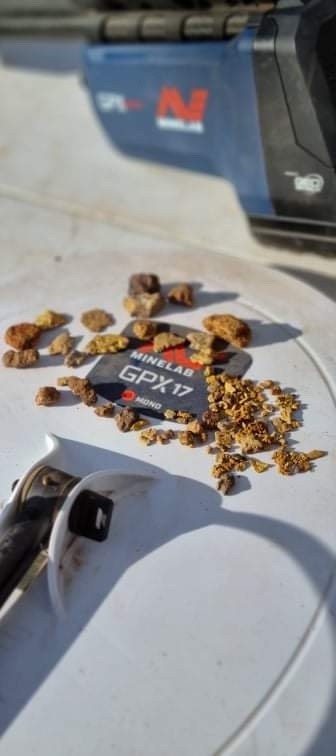
-
Interesting results with the DD coil Steve, that ground must be pretty bad as I would not have considered the way the DD is configured on the GPX6000 to be that much different than the mono coils in bad ground. Did you by chance do a comparison between EMI and Salt mode? In my experience I’ve found salt to have better performance over variable ground compared to Cancel mode. Edit: In Difficult mode.
JP
-
There is no doubt the 7000 has the extra grunt required to punch in beyond the 6000’s capabilities, a good example is in washes where there are large rocks in the bed of the creek bottoms. In the GP and GPX days I worked many hundreds of kilometres of creek beds in the northern parts of Australia and would often pluck a decent widow nugget in amongst the boulders especially up in the Kimberley. Those nuggets would be randomly distributed along the creek lines and it often left me wondering what else was in there being hidden by the larger chunks of diorite and slates liberally scattered about.
Unfortunately I have not been able to return to all these locations with the GPZ7000 but the few I did return to were an eye opener with undiscovered mini patches often associated with those original isolated nugget finds. This is just one example of where the ZVT tech provides a definite advantage but its not everywhere, the ground needs to be conducive to the tech and in a lot of places the depth is just not there so the earlier sampling of GeoSense and overall lightness of weight and ease of use of the GPX6000 is far more beneficial. I am actually afraid to use my GPX6000 too much because it is hard to go back to the weight and complexities associated with using the 7000 (harnessing up etc).
But I will say this though, it is nice to listen to a 7000 with its steady happy place audio compaired to the twitchy fast paced behaviour of the 6K 😊.
JP
-
14 minutes ago, Steve Herschbach said:
Very much like the big ferrite ring debates - our soils here are loaded with ferrite, and I never saw the ring making a difference, though I used it anyway. It was something you really made a point of how important it was, but frankly most people here thought just the opposite.
The key thing is to NOT have a signal on the Ferrite ring at all, if there’s no signal then all is good, however from the factory more often than not the Ferrite balance is way out so if you try to detect that way then the detector will not be optimal for sure. If you use Semi-Auto and never use Quick-Trak to achieve a calibration then the ferrite balance will be locked to whatever it was set to and can never change. If the ground has heaps of X signal and the salt/conductive signals and saturation signals are minimal then the Auto mode is perfectly fine.
They KEY is to check and not have any signal on your ferrite ring then go detecting. 😊 Preferably use Semi-Auto to cut down on the risk of some salt signal messing things up, but if you do use Semi-Auto then it is your responsibility to make sure the Ferrite calibration is correct. I barely need to change mine from day to day especially in the warmer months.
Back on topic with the GPX6000, the Normal timings are a combination of Normal and Difficult, the small target sensitivity comes from the Difficult timing, with the 6000 both timings are running at all times this is why you can go from one timing to the other and not need to ground balance (if you perform an Quick-Trak in Difficult then Normal will be balanced as well). If you use Difficult you hear Difficult timings information only and I would say with Auto+ in quiet ground the lack of ground signal highlights all the electronic and Sferic noises (due to the timings having higher gains than Normal) whereas even in very quiet soils Normal always has some level of ground signal which masks the background electronic noises.
Good discussion Steve 😃
JP
-
Steve as always a very informative post from you and interesting insights into the GPX6000 in your neck of the woods. The 6000 behaviourally is quite different when operated in Normal compared to Difficult so different in fact you could consider it to be almost 2 detectors in one.
As an example I was working some benign ground recently but had just come from some adjacent variable soils so was still in Difficult mode (using the 17” mono). The overall soils in the area where derivative of granite contacts so I was using the Auto+ mode which really ramps up the sensitivity if the soils will allow (much higher than full manual mode). I was noticing the detector was becoming increasingly jittery the further I moved away from the red stained ground into the paler soils which got me thinking as I was expecting the reverse considering Difficult is so good at ironing out mineralisation, so out of curiosity I switched to Normal, when I did that the whole detector just went silent and smooth.
The only thing I can put it down to is the inbuilt gain of the difficult timings is much more aggressive than Normal to lift the left over target signals after the ground has been cancelled out, as such combined with the increase in sensitivity in the quieter soils from using the Auto+ the sensitivity of the detector had elevated to the point where the noise floor of the machine was down to the electronics level so Sferics, EMI and some electronics noise was getting into the signal train (all supposition on my part).
The other thing I have noticed is the channel flipping is much more evident in Normal mode, so you have to be careful on those dipping low toners as they can herald a really nice piece at depth. I have not focused much on chasing deep signals with the 6000 as I have the GPZ7000 for that, but with care and attention there is a huge amount of subtle information with this detector which will improve with time spent in the field.
JP
-
EMI/Sferics are depth killers, this is why the GPX5000 came with the Stabilizer setting set on half way, however the GPZ7000 is far better for Sferic noise than the previous GPX machines but can suffer from it nevertheless. Salt is also a depth killer, in a lot of ways it is far worse than EMI due to swing speed having such a variable interaction with the noise generated (from micro variation to excessively loud depending on the location and speed of the coil).
400 mm is not that deep relative to what both these machines can achieve, I’ve dug stuff not much bigger than a gram at similar depths in the right locations, so I would say there was a combination of Salt and EMI present at the test site.
IMHO the Salt mode has better outright depth compared to Cancel assuming EMI is minimal (Cancel is the default setting when a DD coil is attached to the GPX6000) , Salt mode does have some noise cancelling characteristics so if the EMI/Sferics is not too bad then I will use that first before going to Cancel mode. There is a good reason for having a 14” coil size as the default DD coil with the GPX6000, essentially the Rx of GPX14DD it is a 7” Monoloop so the sensitivity to surface targets is off the charts but also the 14” overall size brings up the depth which is compromised when using a Cancel or Salt Tx/Rx format compared to a traditional DD receive or compared to to using a dedicated monoloop coil.
When using the DD, small targets are most sensitive on the left hand edge of the coil with some sensitivity in the centre like a traditional DD, for deep targets the whole left winding is alive with the bulk of the deep signal coming from the centre. It helps with visualisation to think of slower broad deep target noises coming from the centre of the coil.
JP

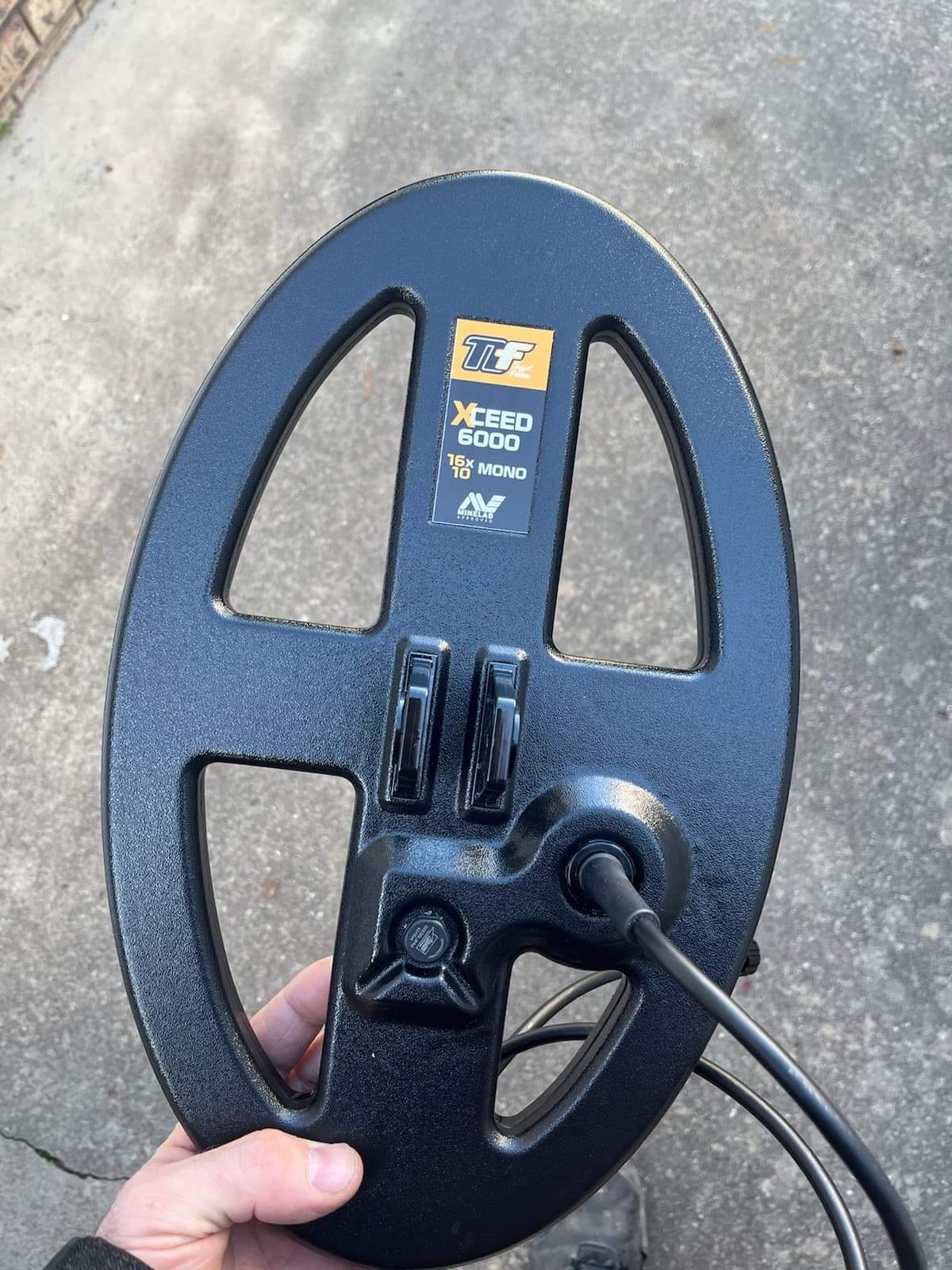

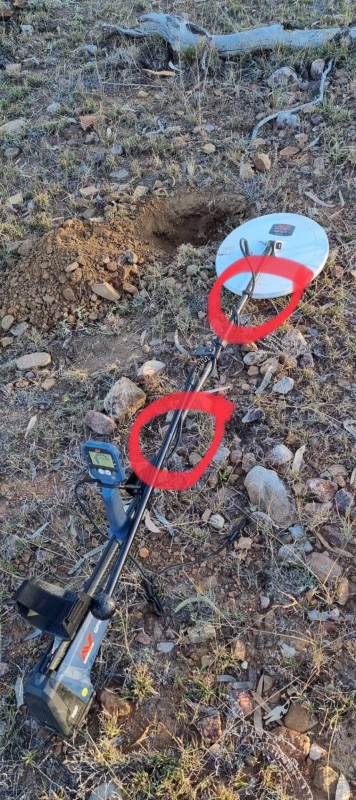
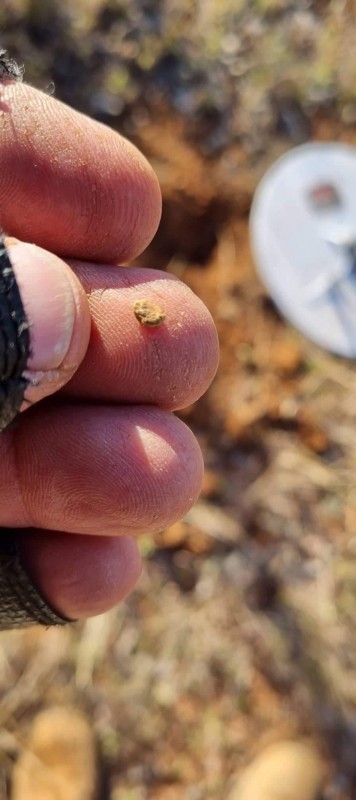
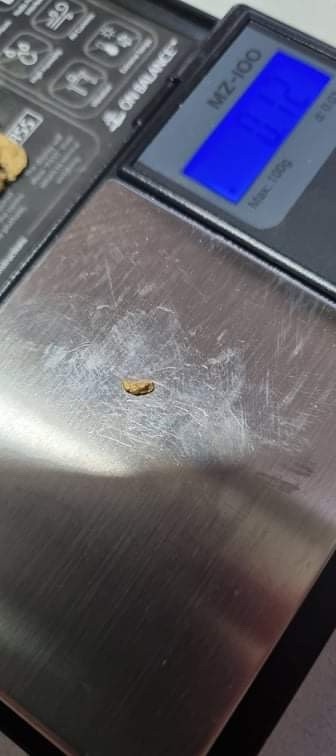
Coiltek Coils For The GPX 6000 - Confirmed!
in Detector Prospector Forum
Posted
And my apologies for dragging the subject a bit off topic. And I agree the 10 x 6 for the Equinox is a thing of beauty.
JP